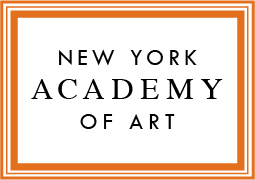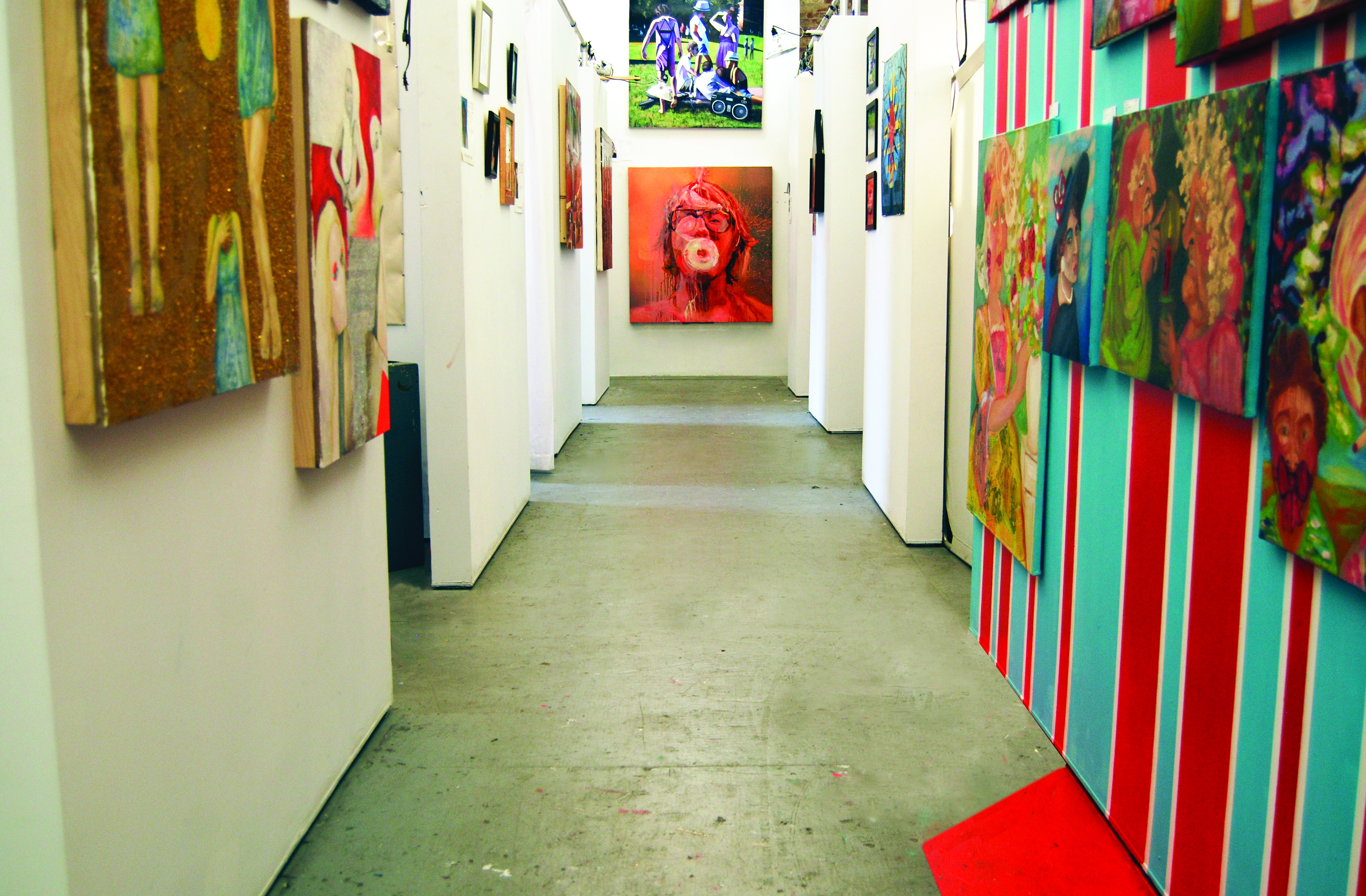Studios
The Academy provides on-premise studios for full-time MFA students during their course of study and full-time CFA students during their summer term. Studios are grouped to create an exchange of ideas and thinking across disciplines. Faculty members make regular tours of the studio spaces for casual tutorials and formal critiques. Students may also rent studio space in the building during the summer.
Everyone is responsible for maintaining a safe and healthy studio environment. Your conduct in the studio — and especially in the classroom — affects not only your own health, but also the health of everyone else in the building. As part of your studio-art training, students are expected to review the proper use and disposal of materials, including all relevant safety procedures. If you are aware of a health or safety issue, or are unsure if a process or material is safe, please seek immediate guidance from Operations Manager Tim Buckley (tbuckley@nyaa.edu) or Night and Weekend Studio Manager Jess Leo (jleo@nyaa.edu).
General Guidelines
- Walls, floors, and classroom equipment should be kept clean and free of debris.
-
- If your work spreads dust, debris, clay, plaster, paint, or other matter to these surfaces, use an appropriate protective covering — e.g. drop cloths, plastic sheeting, or Kraft paper.
- It is your responsibility to protect and clean up your work area. Studio Etiquette is your personal responsibility.
- Students may not alter existing classroom structures or mechanical systems.
-
- Do not hang anything from or otherwise interfere with the fire-suppression system — the green and red pipes or sprinklers.
- Sinks and surrounding areas must remain clean and clear.
-
- Paint waste — whether aqueous or oil/solvent-based — should never be poured into the sink. Paint contains heavy metals. Please do your part in protecting the NYC watershed. Newtown Creek does not need any more toxic waste.
- No clay or plaster in the sink area.
- Properly store all of your artwork and personal belongings.
-
- When class ends, paintings are to be taken back to your studio or stored in the racks and sculptures are to be placed on shelves. Do not leave sculptures on sculpting stands. Classrooms cannot be cleaned properly if the floor can’t be cleared.
- All stored materials must be labeled with your full name and year.
- Nothing can be kept in the hallway. Hallways must remain unobstructed.
Sculpture Studios
- Buckets, tools, or hands that are covered in clay or plaster should never be rinsed off in the sink – doing so will clog the drain. Use a wash bucket for initial cleanup. Studio Etiquette is your personal responsibility.
- Clay and plaster are the most commonly used materials in the sculpture studios. Clay and plaster both pose the same dust hazards. Never carelessly produce dust! Clay contains silica, which, if inhaled over the course of just a few years, can lead to the debilitating lung disease Silicosis. Therefore, there is a strict No Dry Clay policy in the classrooms.
- Classrooms Gl1, Gl2, and workspace GL3 all have HEPA air filtration units and downdraft tables for sanding or other processes that may create dust.
- Clay must be kept moist at all times. Any clay scraps must be placed in a bucket. It is your responsibility to mop the floor in your work area and clean studio surfaces with a wet sponge after use. Studio Etiquette is your personal responsibility.
- Sweeping, dusting, and vacuuming (unless HEPA certified) are all bad ideas in the sculpting classrooms. These cleaning methods will fill the air with dust. Silica can stay airborne for a very long time. Please use a mop or sponge.
- Clay sculptures that need to be dried before entering the kiln should be placed on designated shelving.
- Kiln use can be scheduled by writing your name on the kiln room door calendar.
Painting Studios
- No turpentine or turpentine based mediums/varnishes. If you are unsure…ask first.
- Store solvent, oil, and mediums in the fire cabinets located on your studio floor. Label everything with your full name and year. If the solvent, oil, or medium is not in its original container please also label the jar with its contents.
- Please avoid leaving jars of solvent open. Put a lid on it. Studio Etiquette is your personal responsibility.
- DO NOT KEEP PAINT/OIL/SOLVENT SOAKED RAGS OR PAPER TOWELS IN YOUR STUDIO. Dispose of paint rags in the designated bins located on each floor near the fire cabinet.
Wood Shop
- Please see Academic Calendar for full list of wood shop hours.
- The woodshop will operate by appointment. There will be a sign up sheet on the door. No more than 2 students will be allowed in the woodshop at a time.
- You must fully understand the safe operation of each tool that you use. Do not use any tool that you have not been properly trained to use.
- Wear appropriate clothing. This means no loose-fitting clothes, neckties, or jewelry. Long hair must be covered or tied back. No open-toed shoes or slippers.
- While using any tool in the shop, you must wear safety goggles
- Hand tools, power drills, and plastic skulls may be signed out of the shop by leaving your student i.d. All signed-out tools must be returned on the same day that they were signed out. NO I.D = NO TOOL SIGN OUT – No exceptions.
- Canvas/Paper is bestowed once a year. Painting Majors recieve 3 yards of canvas and Drawing Majors receive 3 yards of paper. Stop by the woodshop during operating hours to request your canvas/paper.
Print Shop
- You must fully understand the operation of print shop equipment before use. Do not use equipment that you have not been properly trained to use.
- Please familiarize yourself with our print shop cleaning protocol. A copy of “HOW TO CLEAN INKING AREA,” a guide lovingly created by own very own Richard Gnann, is available in the print shop.
- The clean tables are not work tables – the clean tables are clean tables.
- Print Shop flat files are for use by 1.) students currently enrolled in a printmaking class or 2.) drawing majors. If you are a drawing major who would like to use a flat file, please let me know.
Spray Booth
- The spray booth is a designated work area for the use of materials that contain volatile organic compounds (VOC) such as varnish, fixative, and approved epoxies. Any process that results in fumes of any kind must be done in the spray booth. If you are unsure about any materials please speak with Studio Manager Tim Buckley before use.
- Make sure that the vent is turned on while using the spray booth. The on/off switch is located on the wall to the right of the spray booth.
- Keep the door closed when in use.
- Sanding is not allowed in the spray booth. There are downdraft tables and particulate filters in GL1, GL2, and Gl3 – Use this equipment when sanding.
- Wear proper respiration equipment, eye protection, gloves, etc.
- The spray booth must be cleaned by the student immediately after use. Studio Etiquette is your personal responsibility.
Rule #4 is of special importance because the spray booth is designed to filter vapors and not dust. Dust will clog the filters and they will cease to properly filter vapor. Please talk to me first before sanding anything.
Any questions please feel free to contact us
- Tim Buckley – Studio and Building Manager – tbuckley@nyaa.edu
- Jess Leo – Frame Shop and Weekend Manager – jleo@nyaa.edu
- Arielle Tesoriero – Nighttime Studio Manager and Model Coordinator – atesoriero@nyaa.edu









